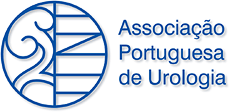Composição dos cálculos urinários: Variação com o género e idade e evolução nos últimos 7anos
DOI:
https://doi.org/10.24915/aup.34.3-4.17Palavras-chave:
Cálculos Urinários/química, Espectrofotometria de Infravermelhos, Factores de Género, Factores de Idade, UrolitíaseResumo
Objetivos: Analisar a composição dos cálculos urinários na nossa instituição incluindo a estratificação por idade , género e a evolução dos últimos 7 anos.
Material e métodos: Os autores reviram todas as análises de cálculos realizadas no Centro Hospitalar do Tâmega e Sousa-Penafiel, desde Janeiro de 2009 a Setembro de 2015. Os doentes foram estratificados por género e idade. Foi analisada a evolução da composição dos cálculos ao longo dos anos. Os cálculos foram analisados usando espectroscopia de infravermelhos.
Resultados: Das 302 análises válidas, 55,3% dos doentes eram mulheres e 44,7% eram homens. A idade média dos doentes foi 51 ± 14 anos. Foram identificados 7 compostos minerais diferentes. 51,6% (N=156) continham Oxalato de Cálcio, 41% (N=124) Fosfato de Cálcio (33% em forma de Apatite), 37,7% (N=114) Ácido Úrico, 22,1% (N=67) Urato de Amónio, 9,6% (N=29) Fosfato Amónio Magnésio, 6,3% (N=19) Urato de Sódio e 1,3% (N=4) continham Cistina na sua composição.
Apenas 30,4% dos cálculos eram constituídos por um único componente químico. Destes, 56% eram cálculos puros de Oxalato de Cálcio e 31% eram cálculos puros de Ácido Úrico. Os cálculo mistos mais frequentes foram Oxalato de Cálcio + Fosfato de Cálcio (Apatite) seguido de Ácido Úrico + Urato de Amónio compreendendo respectivamente 45% e 27% de todos os calculos mistos.
Relativamente à etiologia, os cálculos foram divididos em 3 grupos: Não infeccioso, Infeccioso e Misto (com componente não infeccioso e infeccioso), e a prevalência foi 37,7%, 4,3% e 57,9% respectivamente.
A composição foi semelhante em ambos os géneros , sendo a principal diferença nos cálculos de Urato de Amonio com uma prevalência de 28% em homens e 17% em mulheres (p=0,379)
Os doentes com mais de 50 anos apresentaram uma maior prevalência de cálculos com Ácido Úrico que correspondeu a 49% dos seus cálculos. (p<0,001)
Ao longo dos 7 anos do estudo verificou-se uma redução da prevalência de cálculos mistos com componente de infeção com uma diminuição gradual desde 89,6% em 2009 para 27% em 2015.
Conclusões: Os cálculos de Oxalato de Cálcio foram os mais prevalentes, no entanto esta diferença não foi tão significativa como em outros estudos. Este estudo realça a existência de diferenças regionais significativas na composição dos cálculos e aponta para a importância do desenvolvimento de registos nacionais e internacionais de composição dos cálculos urinários.
Downloads
Referências
2. Amato M, Lusini ML, Nelli F. Epidemiology of nefrolithiasis today. Urol Int. 2004;72 (Suppl 1):1-5.
3. Domingos F, Serra A. Nephrolithiasis is associated with an increased prevalence of cardiovascular disease. Nephrol Dial Transplant. 2011;26:864–8.
4. Daudon M, Traxer O, Lechevallier E, Saussine C. Épidémiologie des lithiases urinaires. Prog Urol. 2008;18:802-14.
5. Turk C, Knoll T, Petrik A, Sarica K, Skolarikos A, Straub M, et al. Guidelines on diagnosis and conservative management of urolithiasis. Eur Urol. 2016;69:468-74.
6. Daudon M, Donsimoni R, Hennequin C, Fellahi S, Le Moel G, Paris M, et al. Sex- and age-related composition of 10,617 calculi analyzed by infrared spectroscopy. Urol Res. 1995;23:319-26.
7. Daudon M, Bounxouei B, Santa Cruz F, Leite da Silva S, Diuf B, Angwafoo III FF, et al. Composition des calculs observés aujourd’hui dans les pays non industrialisés. Prog Urol. 2004;14:1151-61.
8. Ribeiro da Silva SV, Cordeiro de Matos D, Leite da Silva S, De Francesco Daher E, Campos HH, Bruno da Silva CA. Chemical and morphological analysis of kidney stones. A double-bind comparative study. Acta Cir Bras. 2010;25:444-8.
9. Costa-Bauzá A, Ramis M, Montesinos V, Conde A, Pizá P, Pieras E, et al. Type of renal calculi: variation with age and sex. World J Urol. 2007;25:415-21.
10. Alaya A, Nouri A, Belgith M, Saad H, Hell I, Hellara W, et al. Changes in kidney stones type according to sex and age in Tunisian patients. Actas Urol Esp. 2012; 36:171-7.
11. Nunes A, Pereira S, Sandul A, Garcia R, Ramos R, Silva R, et al. Urinary stone composition analysis – five-year experience of a major Portuguese urological center. Eur Urol Suppl. 2013; 12: 83.
12. Baltazar PM, Meirinha A, Patena-Forte JP, Severo LA, Campos-Pinheiro L. Urinary stone composition analysis in a representative sample of Portuguese population. Eur Urol Suppl. 2015; 14: 50
13. Daudon M, Doré JC, Jungers P, Lacour B. Changes in stone composition according to age and gender of patients: a multivariate epidemiological approach. Urol Res. 2004;32:241-7.
14. Bouatia M, Benramdane L, Idrissi M, Draoui M. An epidemiological study on the composition of urinary stones in Morocco in relation to age and sex. Afr J Urol. 2015;21:194-7.
15. Karabacak O, Dilli A, Saltas H, Yalçinkaya F, Yorukoglu A, Sertçelik M. Stone compositions in Turkey: An analysis according to Gender an Region. Urology. 2013; 82:532-8.
16. Hesse A, Brandleb E, Wilberte D, Kohrmannd KU, Alken P. Study on the prevalence and incidence of urolithiasis in Germany. Comparing the years 1979 vs. 2000. Eur Urol. 2003;44:709-13.
17. Sun X, Shen L, Cong X, Zhu H, He L, Lu J. Infrared spectroscopic analysis of 5,248 urinary stones from Chinese patients presenting with first stone episode. Urol Res. 2011; 39: 339-43.
18. Fiuza M, Cortez-Dias N, Martins S, Belo A. Síndrome metabólica em Portugal: prevalência e implicações no risco cardiovascular - resultados do estudo VALSIM. Rev Port Cardiol. 2008;27:1495-529.
19. Siener R, Ebert D, Nicolay C, Hesse A. Dietary risk factos for hyperoxaluria in calcium oxalate stone formers. Kidney Int. 2003;63:1037-43.
20. Kamel KS, Cheema-Dhadli S, Halperin ML. Studies on pathophysiology of the low urine pH in patients with uric acid stones. Kidney Int. 2002;61:988-94.
21. Knoll T, Schubert AB, Fahlenkamp D, Leusmann DB, Wendt-Nordahl G, Schubert G. Urolithiasis through the ages: data on more than 200,000 urinary stone analyses. J Urol. 2011;185:1304-11.




